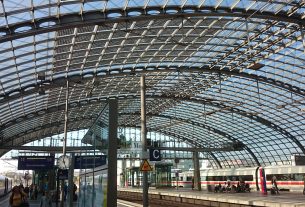|
Getting your Trinity Audio player ready...
|
A previously dormant volcano on Iceland’s Reykjanes Peninsula erupted again on Wednesday night, sending rivers of lava flowing through the region and prompting evacuations from nearby areas, including the iconic Blue Lagoon and the town of Grindavik. The eruption, which peaked early Thursday morning, has raised concerns due to its proximity to populated areas and its potential impact on infrastructure.
The volcano, which had been inactive for over 800 years before reawakening in 2021, is exhibiting typical rift eruption behavior. Unlike more explosive eruptions, this type of volcanic activity is generally less dangerous. It involves slow-moving basaltic lava flows, which are typical of rift zones where the Earth’s tectonic plates are being pulled apart, according to experts.
Geological Context and Eruption Behavior
Thomas Algeo, a professor of earth sciences at the University of Cincinnati, explained that these types of eruptions, while spectacular, are generally “much less dangerous” because they involve slow-moving lava flows rather than violent explosions. The ongoing eruption at Sundhnukar, part of a fissure that spans approximately 1.8 miles, is the seventh eruption of the year, according to Iceland’s Department of Civil Protection and Emergency Management.
While the lava has reached the Blue Lagoon’s parking lot and destroyed a service building, authorities have confirmed there is no immediate danger to the area. Flights at Keflavik International Airport, located nearby, are operating normally. However, the lava flows have significantly impacted local infrastructure, forcing some residents to relocate.
The History of Volcanic Activity in Iceland
Iceland is situated on the Mid-Atlantic Ridge, where tectonic plates pull apart, making the country a hotspot for volcanic activity. The Reykjanes-Langjökull rift zone, which includes the active volcano in question, has been particularly active in recent years. The area had been dormant since the 13th century before it reawakened in 2021. Since then, there have been 10 eruptions, with seven of them occurring in 2024 alone.
Shawn Willsey, a geology professor at the College of Southern Idaho, emphasized that such eruptions are “spectacular” but typical for this type of volcanic system. He noted that once the magma erupts, the pressure is relieved, but the system eventually repressurizes, often leading to future eruptions.
Impact and Concerns for the Region
The eruptions in western Iceland, which includes the capital Reykjavik, have posed unique challenges due to the high population density in the region. The ongoing volcanic activity has led to infrastructure damage, forced evacuations, and concerns over toxic gas emissions, which could affect the health and safety of residents. Emergency officials have monitored the movement of gas, with forecasts indicating that it will move southward, out to sea.
Historically, eruptions in the region have had devastating effects. The 1783 Laki eruption, one of the most catastrophic in Iceland’s history, killed a significant portion of livestock and led to widespread famine. The 2010 eruption of Eyjafjallajokull also caused significant disruption, with ash clouds halting transatlantic air travel for months.
The Future of Iceland’s Volcanoes
Looking ahead, experts like Tobias Fischer, director of the Volatiles Laboratory at the University of New Mexico, suggest that this region could continue to experience frequent eruptions over the coming centuries. “The big question is, is this going to continue on for centuries?” said Shawn Willsey, acknowledging that this region’s volcanic activity is part of a long-standing geological cycle.
As Iceland faces the ongoing challenges posed by volcanic activity, the government and local authorities continue to monitor the situation closely. While the current eruption is smaller than the one that took place in August, it is a reminder of the potential risks in a country located on one of the world’s most active volcanic zones.
References:


